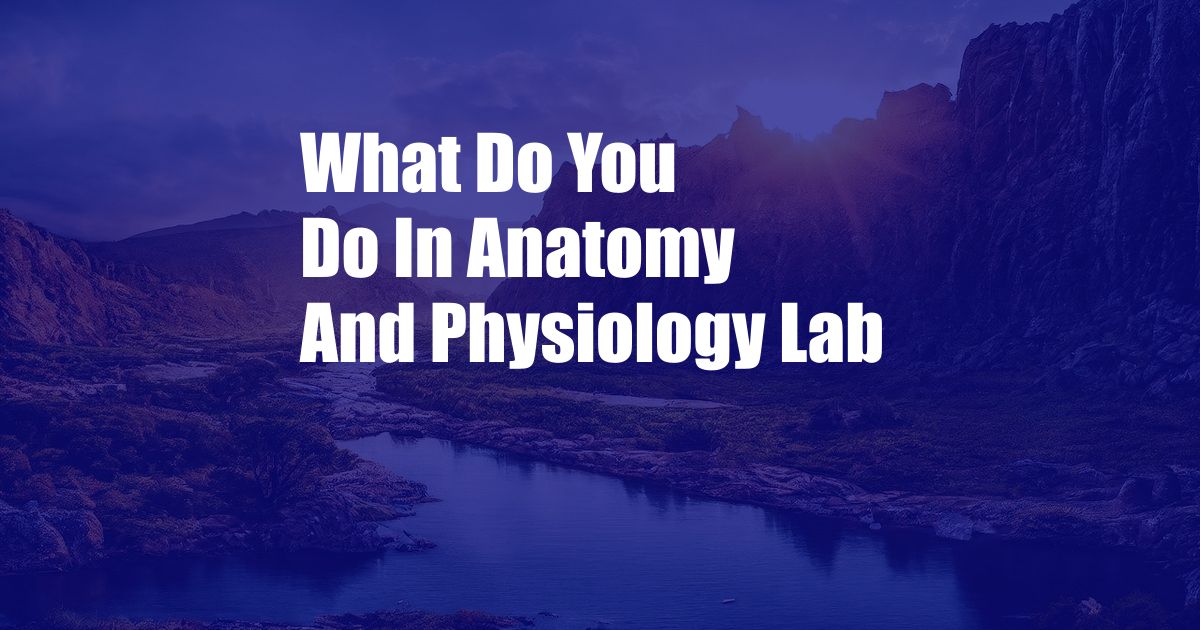
What Do You Do in Anatomy and Physiology Lab?
Have you ever wondered what goes on in an anatomy and physiology lab? If so, you’re not alone. Many people are curious about what happens in these labs, especially if they’re considering taking an anatomy and physiology course. In this article, we’ll take a closer look at what you can expect to do in an anatomy and physiology lab. We’ll also provide some tips for making the most of your lab experience.
Anatomy and physiology is the study of the structure and function of the human body. In an anatomy and physiology lab, you’ll have the opportunity to learn about the different organs and systems of the body, and how they work together to keep us alive.
Activities in an Anatomy and Physiology Lab
Dissection
One of the most common activities in an anatomy and physiology lab is dissection. Dissection is the process of cutting open a body to examine its internal structures. In an anatomy and physiology lab, you’ll have the opportunity to dissect a variety of animals, including frogs, rats, and cats. Dissection is a great way to learn about the anatomy of the body, and it can also be a lot of fun.
Microscopy
Another common activity in an anatomy and physiology lab is microscopy. Microscopy is the process of using a microscope to examine small objects. In an anatomy and physiology lab, you’ll have the opportunity to use a microscope to examine cells, tissues, and organs. Microscopy is a great way to learn about the microstructure of the body, and it can also be a lot of fun.
Physiological Experiments
In addition to dissection and microscopy, you’ll also have the opportunity to conduct physiological experiments in an anatomy and physiology lab. Physiological experiments are experiments that are designed to measure the function of the body. In an anatomy and physiology lab, you’ll have the opportunity to conduct experiments on a variety of topics, including the function of the heart, lungs, and kidneys. Physiological experiments are a great way to learn about the physiology of the body, and they can also be a lot of fun.
Tips for Making the Most of Your Lab Experience
Here are a few tips for making the most of your anatomy and physiology lab experience:
Frequently Asked Questions (FAQs)
-
What is the difference between anatomy and physiology?
Anatomy is the study of the structure of the body, while physiology is the study of the function of the body.
-
What are the benefits of taking an anatomy and physiology course?
Taking an anatomy and physiology course can help you learn about the structure and function of the human body, which can be beneficial for a variety of careers in the health sciences.
-
Is it difficult to take an anatomy and physiology course?
Anatomy and physiology can be challenging courses, but they are also very rewarding. If you’re willing to put in the time and effort, you can succeed in an anatomy and physiology course.
-
What are some tips for doing well in an anatomy and physiology course?
Some tips for doing well in an anatomy and physiology course include: coming to class prepared, studying regularly, and asking questions when you need help.
-
What are some careers that require knowledge of anatomy and physiology?
Some careers that require knowledge of anatomy and physiology include: doctor, nurse, physical therapist, and athletic trainer.
Conclusion
Anatomy and physiology labs are a great way to learn about the structure and function of the human body. They can also be a lot of fun. If you’re considering taking an anatomy and physiology course, I encourage you to do so. You’ll learn a lot, and you’ll have a great time.
Are you interested in learning more about anatomy and physiology? If so, I encourage you to check out the following resources:
- Khan Academy: Anatomy and Physiology of the Human Body
- Coursera: Human Anatomy and Physiology
- edX: Anatomy and Physiology
Thanks for reading!